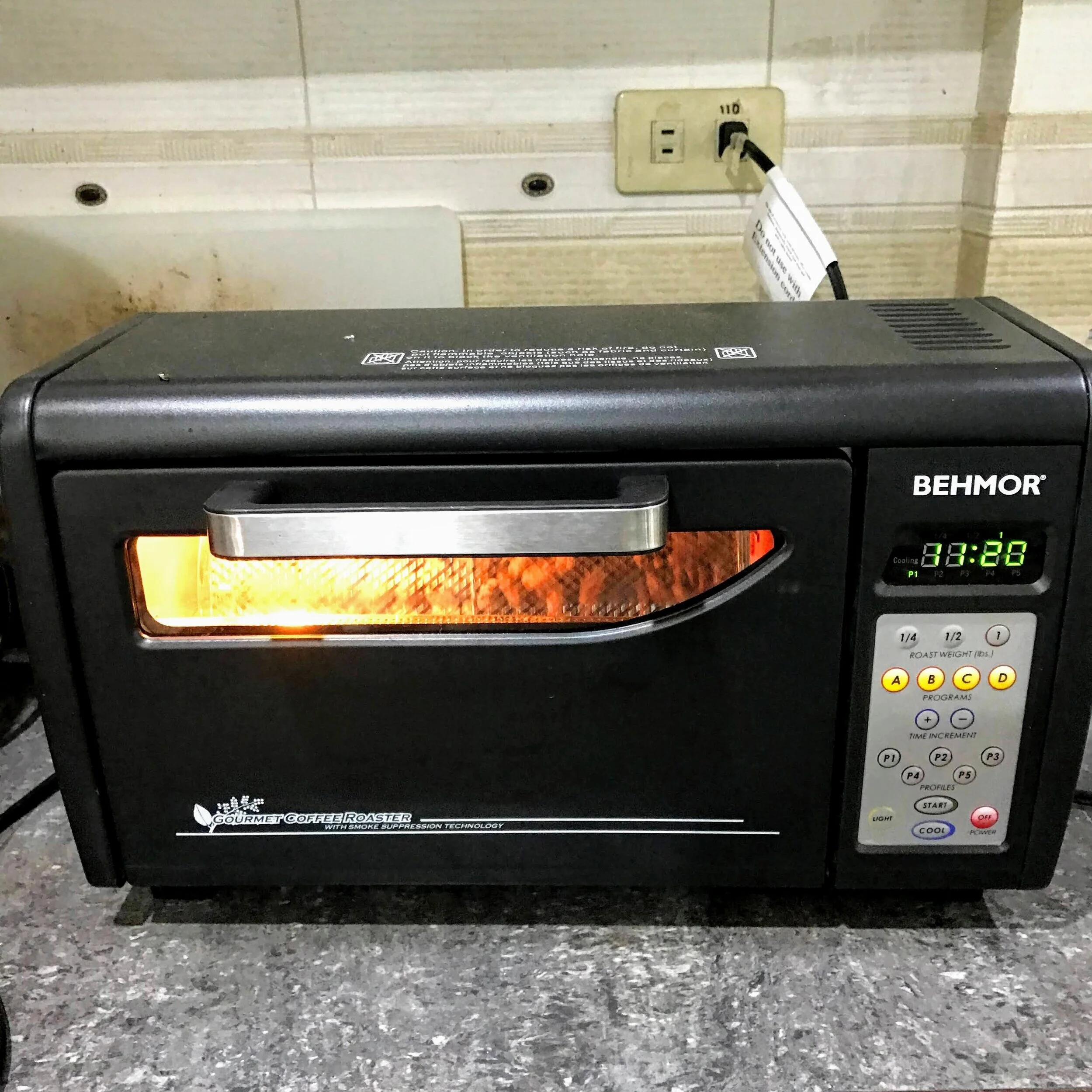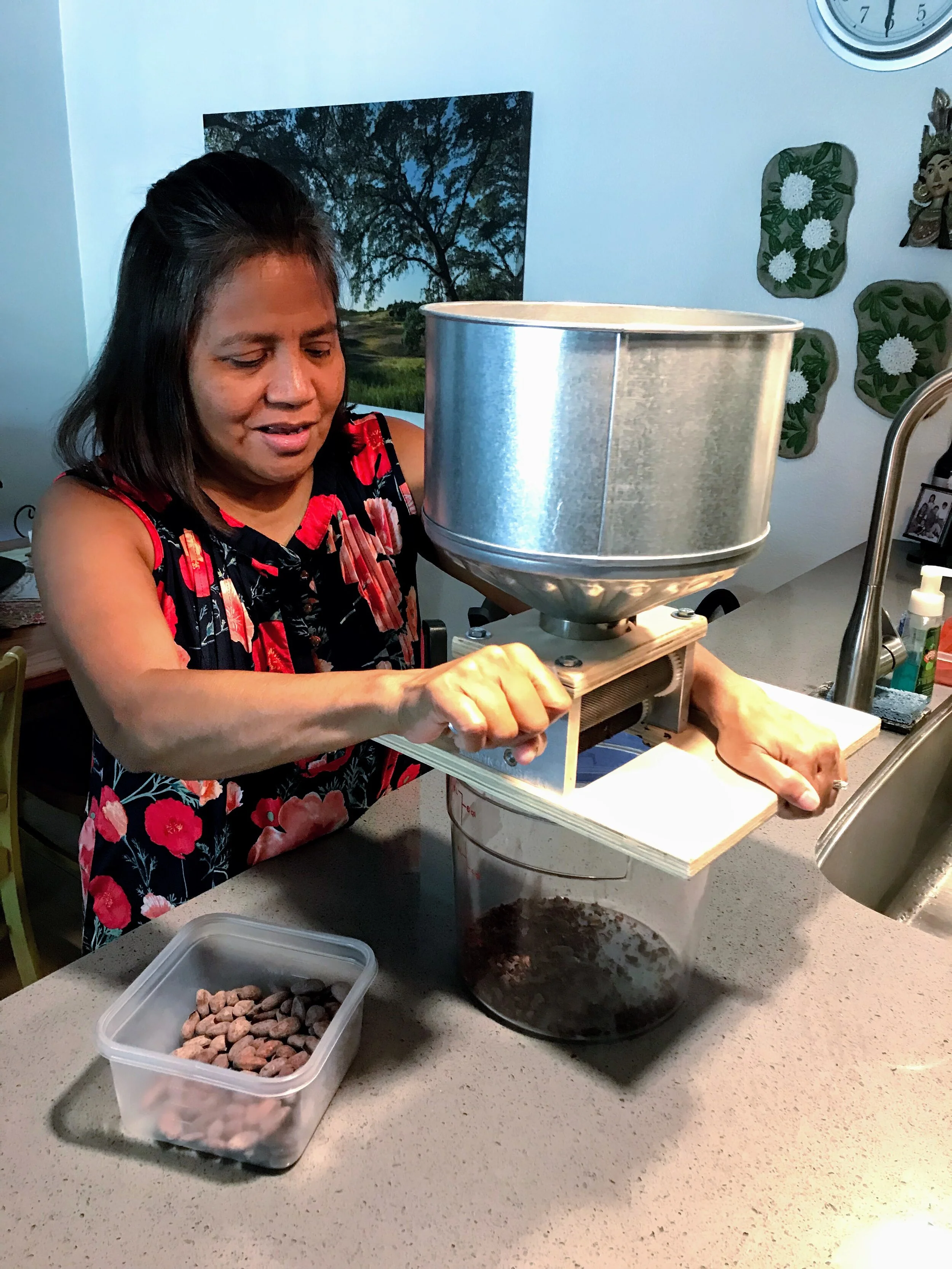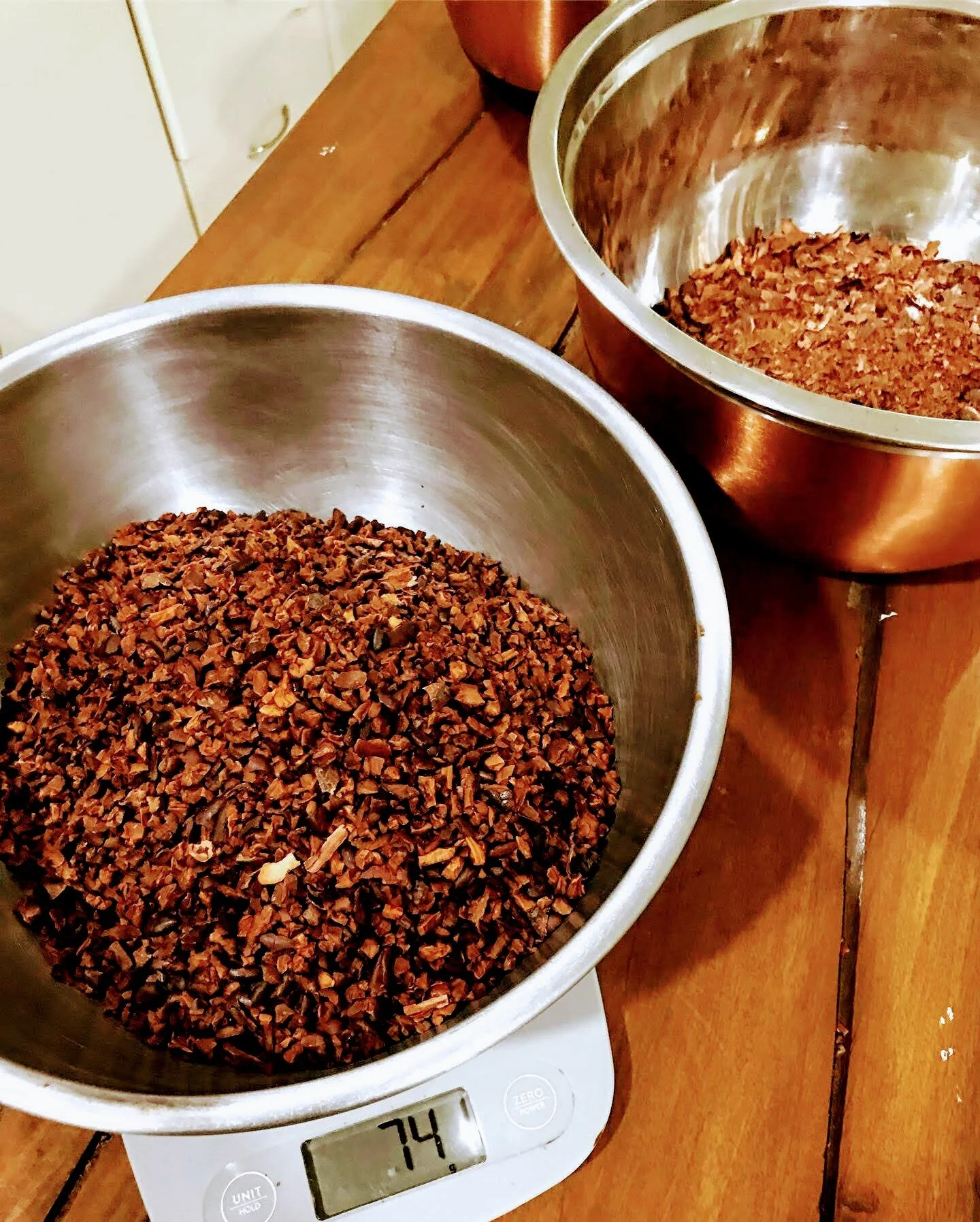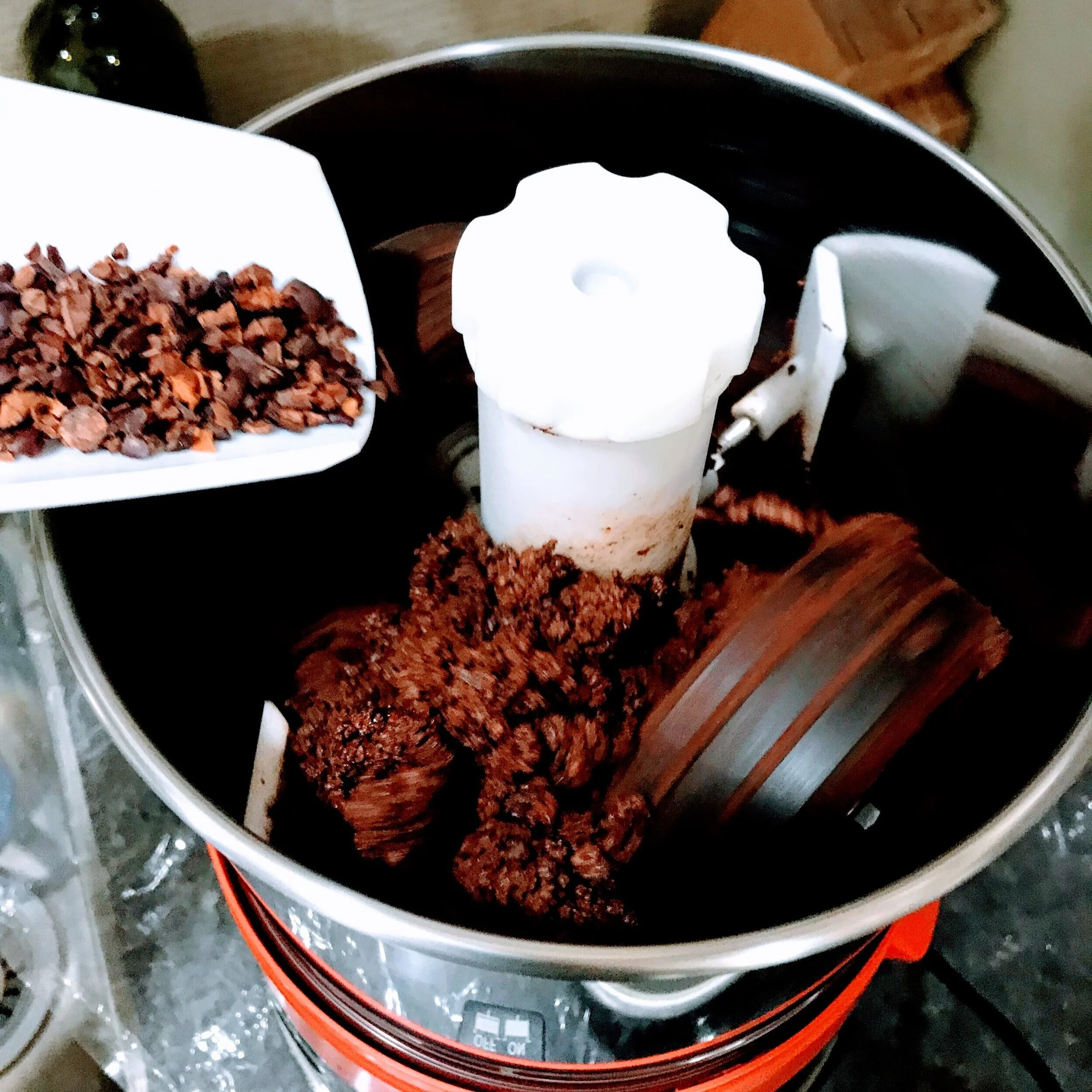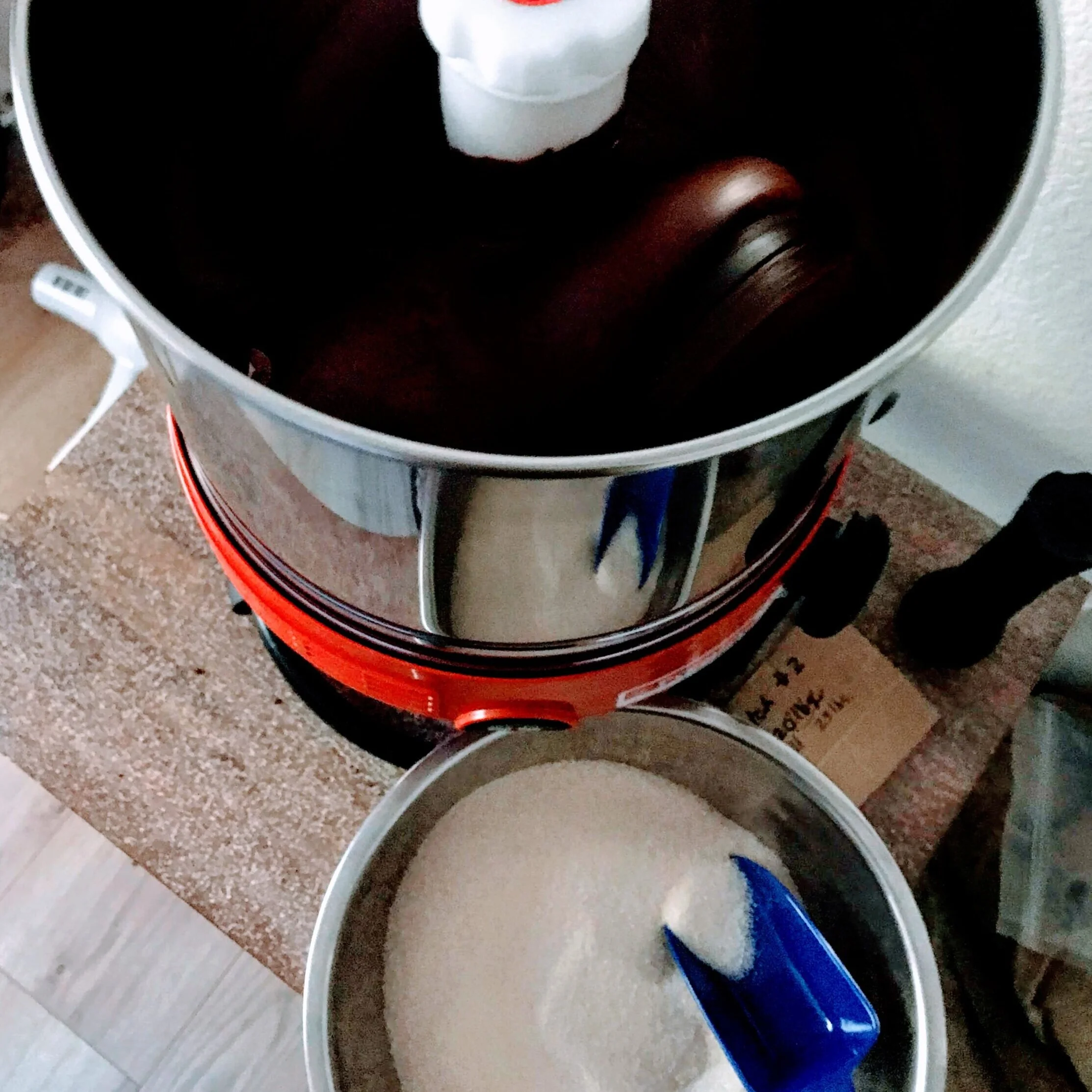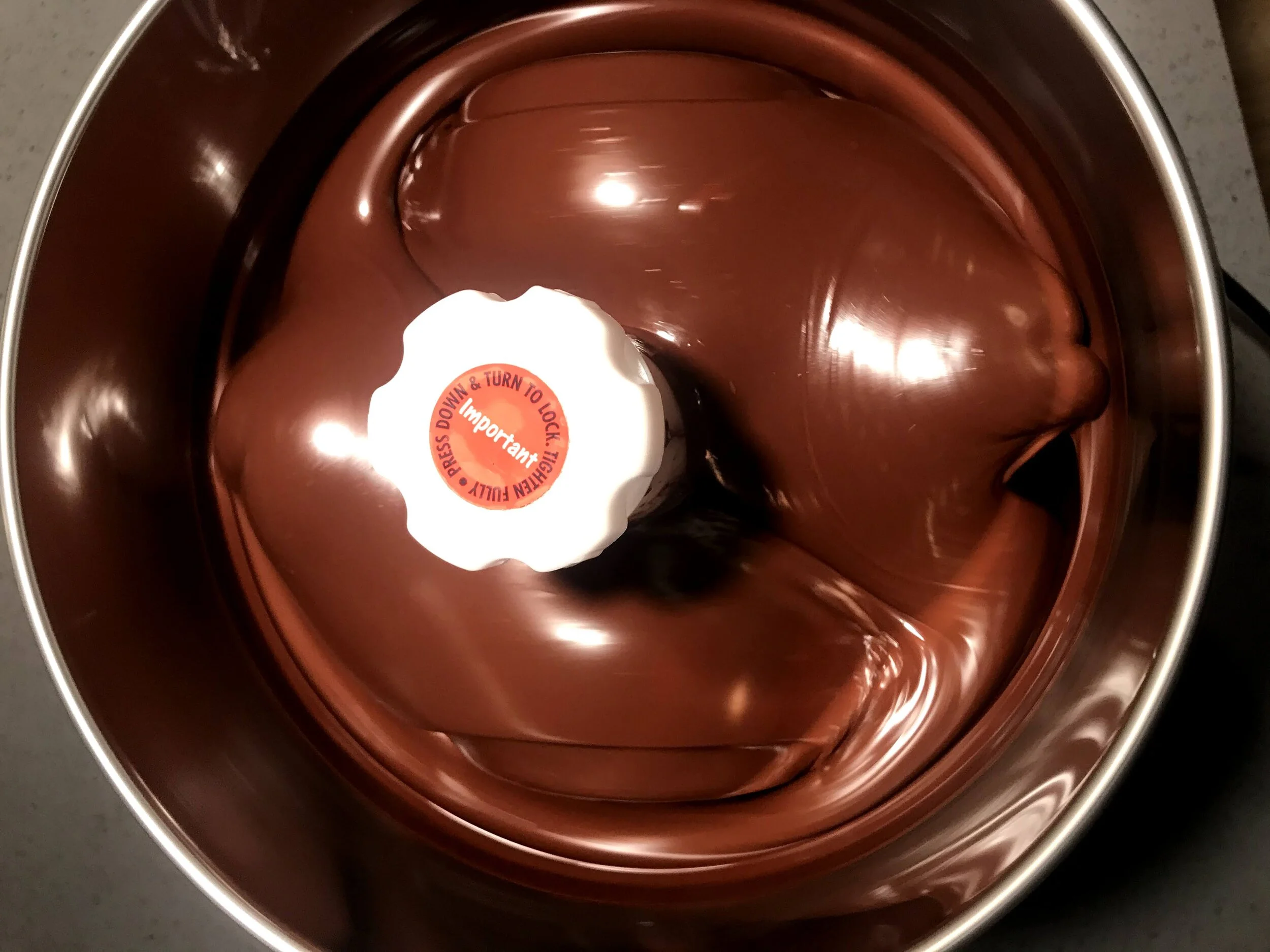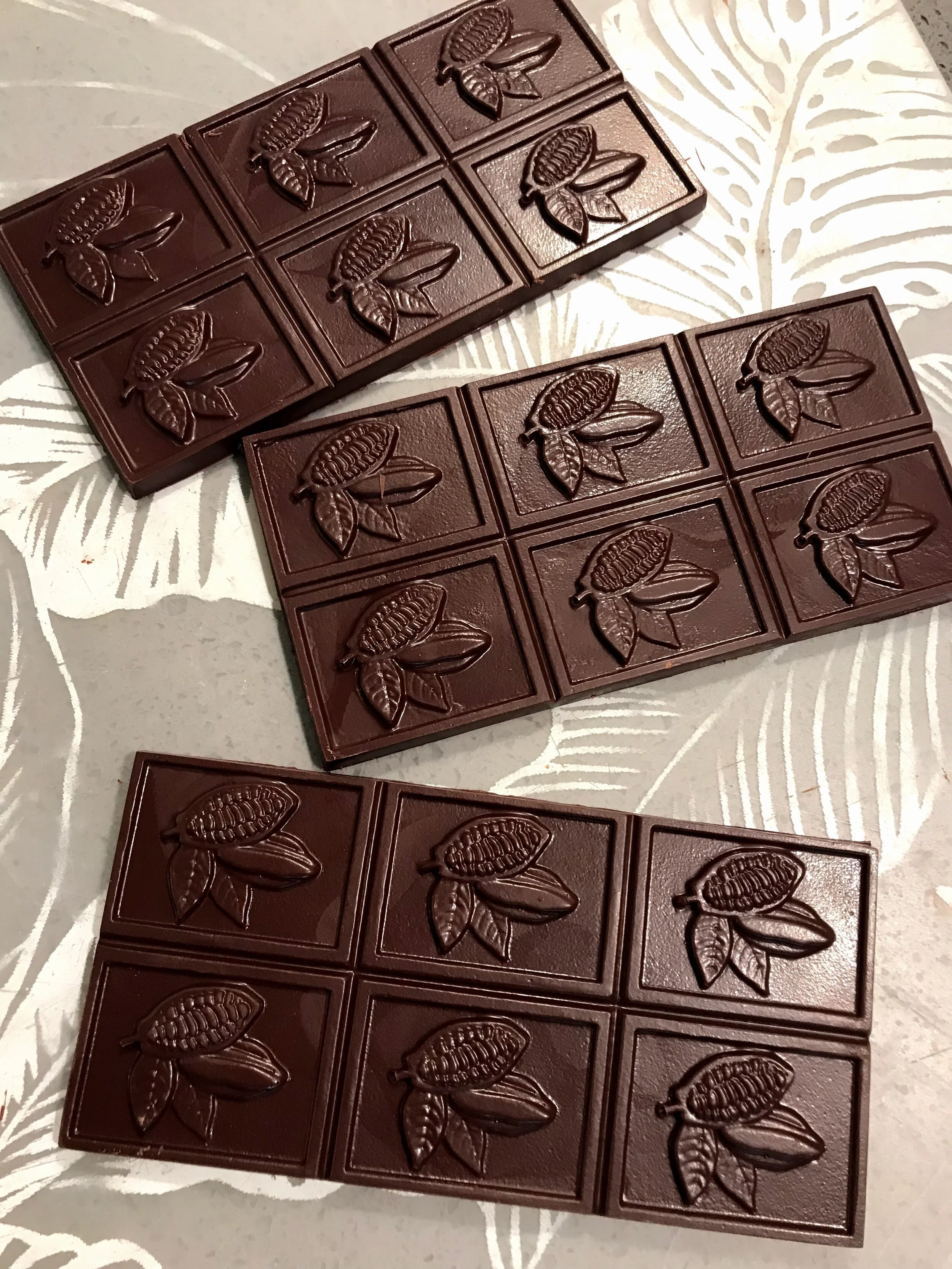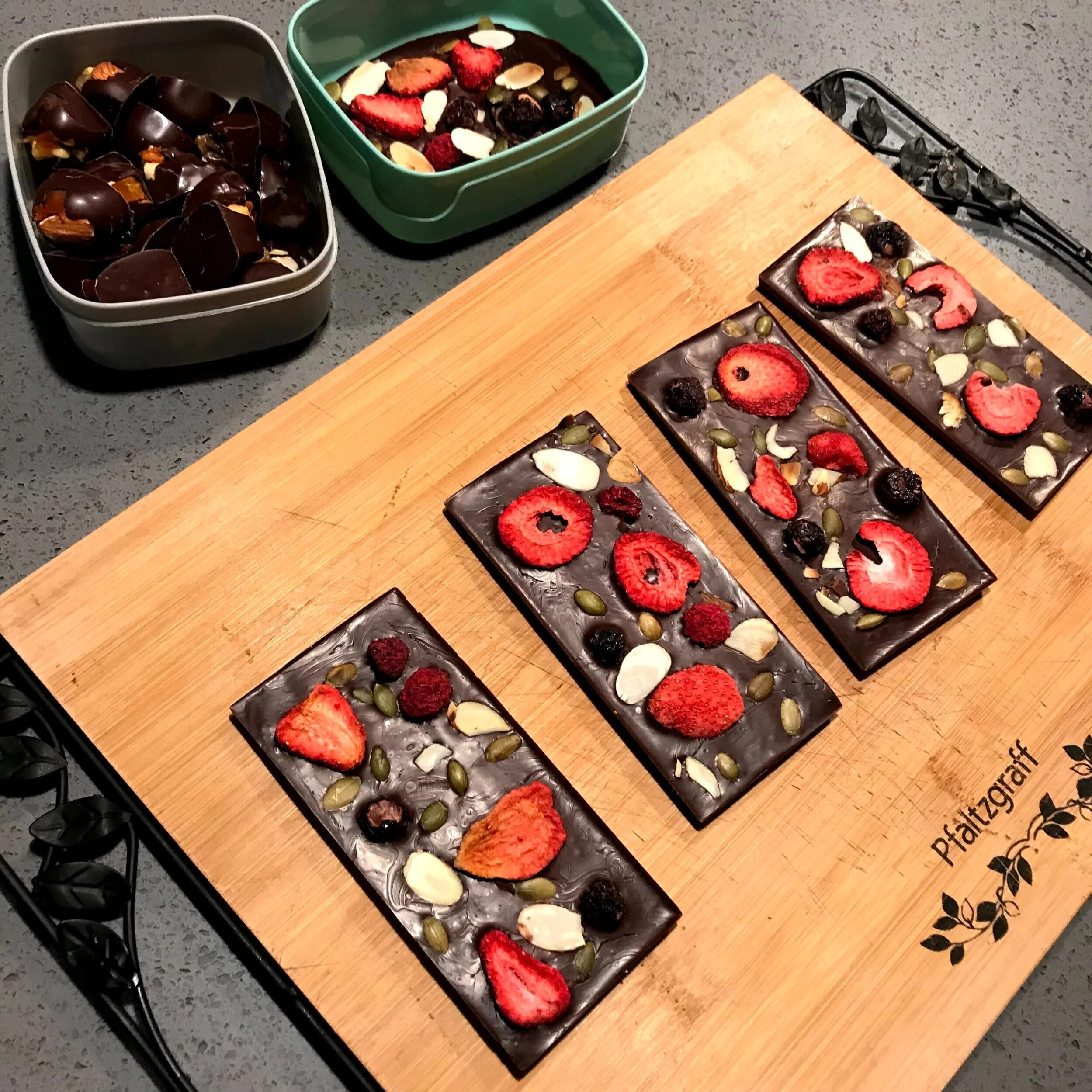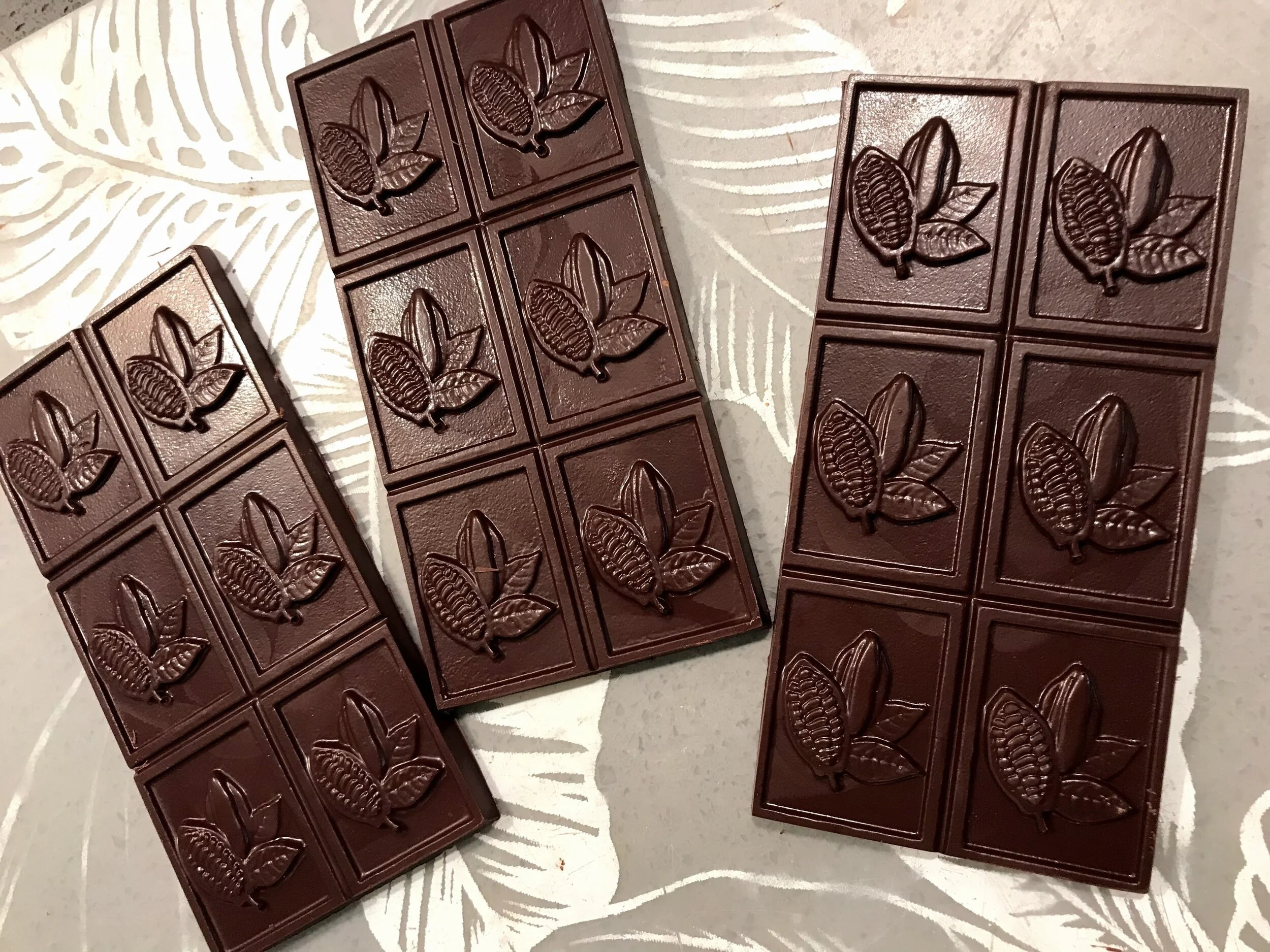
From Bean to Bar at Home
Even before we fermented and dried our own beans, we were already making dark chocolate bars out of cacao beans from origins used by well established craft chocolate makers like Dandelion in San Francisco, Madre Chocolate and Manoa Chocolate in Hawaii. In 2019, I attended Dandelion’s chocolate making class and Madre’s Cacao and Chocolate Bootcamp. Then in November 2020, I spent one month working as an apprentice chocolate maker for Manoa Chocolate in Kailua, Oahu. Dylan Butterbaugh, the owner and co-founder of Manoa Chocolate invited me to come work in his chocolate factory in Hawaii.
Beans are sorted to remove unwanted debris and defective beans. Beans are also sorted by size so that they can be roasted evenly.
The Behmor is a coffee roaster that chocolate makers have adapted for cacao bean roasting. Although not as flexible as using an ordinary oven, the Behmor is easier to use and roasts more consistently than an oven.
The beans are cooled immediately to stop the roasting, usually in front of a fan.
The roasted beans are cracked using a Crankandstein, a cocoa mill designed for small-scale chocolate makers.
Cracking the roasted beans gives you nibs (the bean itself) and their shells.
Winnowing separates the nibs from the shells and here we use the Sylph, a contraption designed and sold by Chocolate Alchemy.
The nibs separated from the shells after winnowing. A 75-80% recovery is usually good enough.
The nibs are poured into the melanger little by little to grind and refine them. After some time the cocoa butter comes out and the chocolate starts flowing more smoothly.
Sugar or another kind of sweetener, as long as it's dry, is added after about an hour.
For us, it usually takes 48 hours to get to the consistency and smoothness we want. The length of time in the melanger affects flavor development through friction, oxidation and the release of volatiles and acids. At this point, we taste the chocolate often, to test the consistency and smoothness.
We check the smoothness of the chocolate using a digital micrometer. Our target is a micron reading of 20 microns or less.
After the chocolate is refined we can then temper it to make chocolate bars.
Our preferred tempering method is the use of cocoa butter silk. The melted chocolate is cooled down to 95°F before mixing the grated cocoa butter silk.
The tempered chocolate is poured into warm molds and shaken to remove the bubbles.
The chocolate molds are placed in the fridge for around 20 minutes, then unmolded. You have your chocolate bar!
You can add nibs, salt, nuts, dried berries or whatever takes your fancy. You can be as creative as you want.
Packaging design is another fun part of the process and experienced craft chocolate makers often admit that excellent packaging and branding are essential if you want your chocolate to sell.
This was the chocolate bar with the label and wrapper designed for the Brighthouse Financial commercial.


